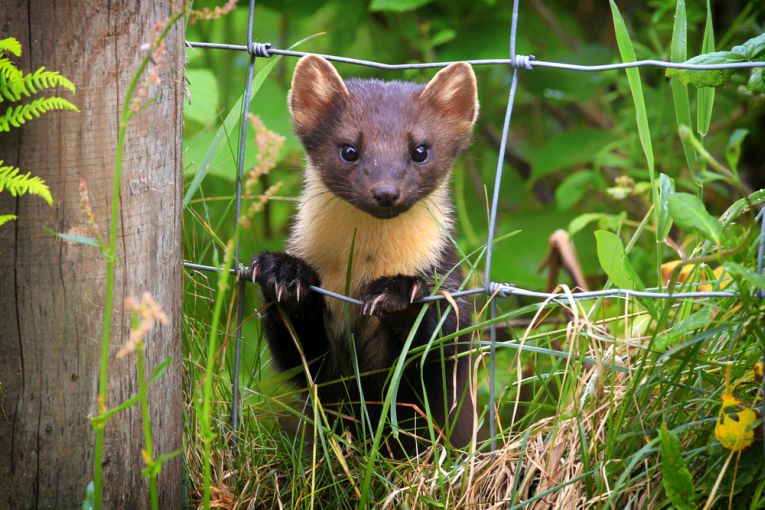When we "fry" in 2100, at 4 degrees C., on average, above current land and ocean temperatures, what will be the effect on other species? They all affect us, including of course those domestic plants and animals we have utilised for millennia. But the temperature has never been that high, and it's going higher still. Even if we stop our ridiculous and almost comically inadequate attempts at energy programmes immediately, it will take 2 centuries to slow down the heating.
Matthew Oates of the English National Trust has vast resources to study many different species. He is their "media naturalist." His organisation have a presence in every county, with hectares of space at all and sundry. From prominent tree conservation to tiny butterfly habitats, the trust have a finger in many pies. The species least able to cope with the common cold spring that occurs frequently nowadays were the losers. The winners were the true lovers of balmy summers, although there was no heat wave as such. Here are some warming possibilities from one country and conclusions about most countries.
From the recent warmest-ever November back to April, the effect of global warming was felt, as it has been often for a decade. Those species suffering from the late spring included summer migrants among the swallow relatives and even owls, whose prey didn't appear till very late. The ladybird beetles and birds such as tits suffered a similar loss of greenfly, and the UK species were much reduced in number. Invasive species still survived in their place. Amphibians couldn't breed properly and sadly for gardeners, they didn't have the close friendship of the slug (which they usually kill in their thousands, of course.)
The benefit of the warming weather was naturally useful for spring flowering plants (snowdrop, primrose, bluebell and pasque flower), as their season seemed to extend, with no competition from grass and other plants. The autumn signalled perfect fungal conditions. Warm and wet conditions gave a boost to the wild mushroom harvest, and even a slime mould, Fuligo septica but also the tree-parasite, honey fungus or Armillaria spp..
June saw the first fine weather, after the auks we know as puffins, Fratercula arctica and then sandwich terns, Thalasseus sandvicensis created breeding records in several of their isolated nesting sites. Orchid species also exploded in flowering numbers in many locations as the temperature rose. From July, rare butterflies such as purple emperor, Apatura iris and chalkhill blue, Lysandra corridonand even a few long-tailed blues, Lampides boeticus, (almost a new UK species) filled the woods and the downs with colour. Bees, including a true new UK species, the tree humble bee, Bombus hypnorum, and the inevitable wasps followed suit. The Bombus is even colonising Iceland, far to the north, given the global warming conditions. Crickets and grasshoppers also thrived last year, but species records haven't appeared in the National Trust.
When berries and nuts appeared on trees late in the year, birds will have benefitted greatly from the enormous crop, while many deer species and even pine marten (from rodents) were well catered for too. Holly and mistletoe finished off the festive season with a plethora of red and white for human celebration.
As the warming continues, with much less pleasant results in drought and flood stricken areas, we can expect the winners above to flourish, but it could be that they are losers elsewhere. We wrote about the loss of bees and butterflies here as the birds and the butterflies are missing.
The common butterflies and mammals are more often reduced in numbers. The rarities, which migrate from warmer areas have an obvious need to move, as their habitat further south is disappearing fast.
All we have to do is look at some warm areas such as parts of North America. Droughts for many years there have caused biologists to consider drastic measures : fish such as the fountain darter and the San Marcos gambusia, amphibians including the Texas blind salamander; the San Marcos salamander and arthropods like the Comal Springs Riffle beetle; the Comal Springs Dryopid beetle and the Peck's cave amphipod were among those suggested for evacuation from the heat of Texas.
Our major fear, from the Arctic to the sub-tropical zones, is that most species that can't move or change their diet, will become reduced in numbers. Extinction is likely, as many researchers have been trying to point out, as they investigate the individual problems of species from every class and phylum.










